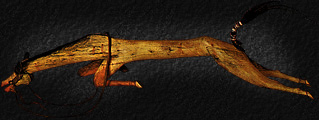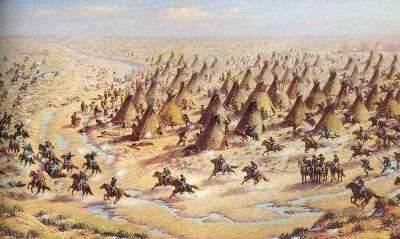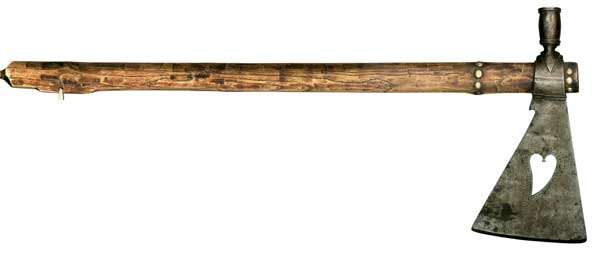
october 2004

A Reckoning With History
The Washington Post Company
By W. Richard West Jr.
 The
opening of the National Museum of the American Indian on
Tuesday speaks eloquently to the poetic possibilities of
history. With this
The
opening of the National Museum of the American Indian on
Tuesday speaks eloquently to the poetic possibilities of
history. With this
powerfully symbolic act, the history of the Americas will
have circled back
on itself to a point of reckoning and resolution five
centuries in the
making. The hemisphere's first citizens will have a
commanding presence in
the political center of the nation, occupying the last
site on the hallowed
grounds of the Mall next door to the Capitol itself.
I cannot contemplate this long journey through the
shadowed valleys of
American history without remembering, as its very
personification, the life
of my late Southern Cheyenne father, Dick West. He was
born in 1912 in
Darlington, Okla., during the nadir of Southern Cheyenne
cultural life. It
had been shattered by the wars of the 19th century and
the annihilation of
the great buffalo herds. At 6 he was forcibly removed
from his parents' home
and sent to federal boarding schools, where he was
dressed in a military
uniform, his long hair was cut and he was prohibited from
speaking Cheyenne.
He remained there for the next 15 years and was trained,
finally, to be a
bricklayer and carpenter, notwithstanding his obvious
gifts as an artist and
his knowledge of traditional Plains art.
Despite these compromised beginnings, my father
ultimately triumphed in a
long and productive life, passing away at 83 in 1996,
well into my tenure as
director of the National Museum of the American Indian.
He remained proudly,
almost fiercely, Cheyenne all his days. In his twenties
he worked hard to
graduate from college when most American Indians did not,
and later he
became the first Native person to receive a graduate
degree in fine arts
from the University of Oklahoma. He became a famed Native
artist and major
figure in the 20th-century Native fine arts movement. A
college teacher, he
taught generations of Native artists who literally have
defined the field in
this century and the one past.
As the museum opening approaches, I often contemplate my
father's life as a
profound, indeed defining, example for me. He worked with
determination to
ground me in the Cheyenne culture that for him had been
retained against the
explicit and oppressive policies of federal
"de-culturalization" he had
faced. To honor him and his hard-won wishes for me, I,
too, have remained a
Southern Cheyenne all of my life. Two years ago I was
asked to join the
Southern Cheyenne Society of Chiefs, which oversees the
ceremonial life of
the tribe, and to sit in council where my
great-grandfather Thunderbull and
my great-uncle Elliott Flying Coyote sat before me.
But my father also believed, almost adamantly, that I
should prepare,
through education, for what he believed would be the
future of the Southern
Cheyenne: a future not held back by cultural insularity.
After college and
graduate school, I trained as an attorney and represented
American Indian
tribes before the courts and Congress for many years
before becoming
director of the National Museum of the American Indian a
decade and a half
ago.
On a far larger, hemispheric canvas, the museum, through
the eyes of Native
peoples themselves, will give voice, in exhibition and
program, to these
same stories of cultural challenge, resilience and
survival. The stories
tell of enduring values, long held, that have centered
the spiritual and
cultural lives of the Native communities of the Americas
for the millennia.
They address candidly the devastating impact of the
European encounter and
the social and cultural destruction that resulted. They
proclaim, however,
with pride and truth looking to the future, the cultural
constancy of
21st-century Native communities in the Americas and their
steadfast refusal
to become mere ethnographic remnants of ancient
histories.
In so doing, the National Museum of the American Indian
stands as an
illuminating metaphor for a broader and fundamental
change in the cultural
consciousness of the contemporary Americas. That
consciousness moves to
recognize and respect the place of Native America as the
originating element
of the cultural heritage of all who call themselves
citizens of the
Americas. It also begins to honor, at long last, the
presence and worthiness
of 40 million contemporary indigenous people and hundreds
of Native
communities as essential components of the cultural life
and vitality of the
hemisphere.
I regret deeply that my father will not be with me on
Tuesday. But in
poignant ways, I know he really is -- because his life of
beautiful and
remarkable cultural faith and triumph against daunting
odds is the story of
Native America writ large that lives in the heart of this
museum.
The writer is director of the National Museum of the
American Indian
The Sand Creek Massacre
Southern Cheyenne
November 29, 1864
Governor John Evans of Colorado Territory sought to open up the Cheyenne and Arapaho hunting grounds to white development. The tribes, however, refused to sell their lands and settle on reservations. Evans decided to call out volunteer militiamen under Colonel John Chivington to quell the mounting violence. Evans used isolated incidents of violence as a pretext to order troops into the field under the ambitious, Indian-hating military commander Colonel Chivington. Though John Chivington had once belonged to the clergy, his compassion for his fellow man didn't extend to the Indians.
In the spring of 1864, while the Cival War raged in the east, Chivington launched a campaign of violence against the Cheyenne and their allies, his troops attacking any and all Indians and razing their villages. The Cheyennes, joined by neighboring Arapahos, Sioux, Comanches, and Kiowas in both Colorado and Kansas, went on the defensive warpath. Evans and Chivington reinforced their militia, raising the Third Colorado Calvary of short-term volunteers who referred to themselves as "Hundred Dazers". After a summer of scattered small raids and clashes, white and Indian representatives met at Camp Weld outside of Denver on September 28. No treaties were signed, but the Indians believed that by reporting and camping near army posts, they would be declaring peace and accepting sanctuary.
Black Kettle was a peace-seeking chief of a band of some 600 Southern Cheyennes and Arapahos that followed the buffalo along the Arkansas River of Colorado and Kansas. They reported to Fort Lyon and then camped on Sand Creek about 40 miles north.
Shortly afterward, Chivington led a force of about 700 men into Fort Lyon, and gave the garrison notice of his plans for an attack on the Indian encampment. Although he was informed that BlackKettle has already surrendered, Chivington pressed on with what he considered the perfect opportunity to further the cause for Indian extinction. On the morning of November 29, he led his troops, many of them drinking heavily, to Sand Creek and positioned them, along with their four howitzers, around the Indian village.

Sand
Creek Massacre
